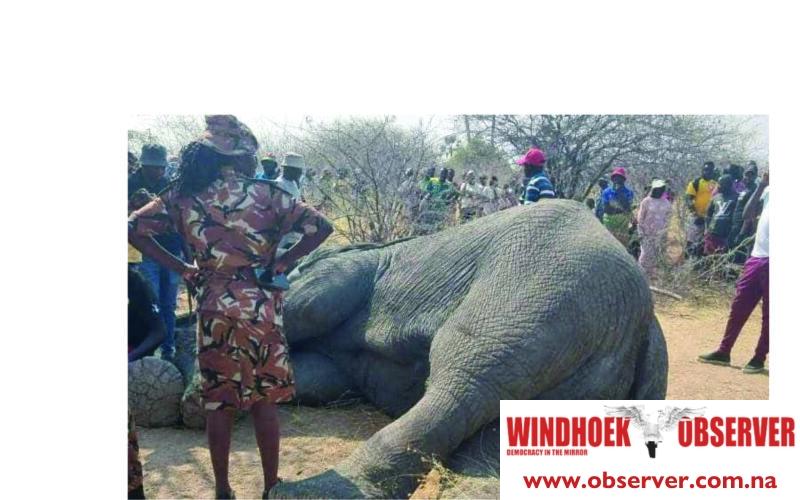Allexer Namundjembo
The Ministry of Environment, Forestry and Tourism (MEFT) has defended its decision to put down an elephant bull near Onawa village in the Omusati region.
The ministry said the move was necessary to protect human lives after several failed attempts to guide the animal back into Etosha National Park.
MEFT spokesperson Ndeshipanda Hamunyela told the Windhoek Observer on Saturday that the elephant had been under observation for several days after it was first spotted in the Otjivarunda area.
It is believed the elephant strayed from Etosha following the recent wildfires that destroyed thousands of hectares of vegetation in and around the park.
“Our officials tried repeatedly to drive the elephant back toward Etosha, but it continued to move further into populated areas, posing a serious threat to residents,” Hamunyela said.
“By the time it reached Onawa, it was near homes and schools, and the level of public panic was high. The ministry therefore had to take the painful but necessary decision to put it down.”
The elephant’s movements were first reported on 8 October near Onkani village.
MEFT officials and park rangers tracked it as it moved northwest through Onaanka and Onaanda, crossing the Oshakati–Okahao and Oshakati–Outapi main roads before reaching Onawa village on 11 October.
“Once the elephant crossed major roads and entered densely populated areas, the risk of human injury or death became unacceptable,” Hamunyela said. “It also caused damage to some infrastructure along its route, which heightened community concerns.”
The ministry said the elephant likely left Etosha because of the wildfires that swept across large parts of the park in late September.
Authorities described the fires as among the most severe in recent years. About 775 163 hectares, roughly 34% of the park, burnt, while another 17 098 hectares outside the park, including communal grazing land, were affected.
Hamunyela said the ministry is exploring ways to improve wildlife monitoring and strengthen communication with communities near Etosha.
“We deeply regret the loss of this elephant, but our first responsibility is to protect human lives,” she said.
“We are now evaluating how to prevent similar incidents in the future, especially in light of environmental pressures caused by climate change and wildfires.”
According to MEFT, wildlife deaths from the Etosha wildfires remain low. Nine antelopes have been confirmed dead, and the total number of animals lost is estimated at ten.
Officials cautioned that this number may be higher due to the difficulty of accessing remote and burnt areas.




